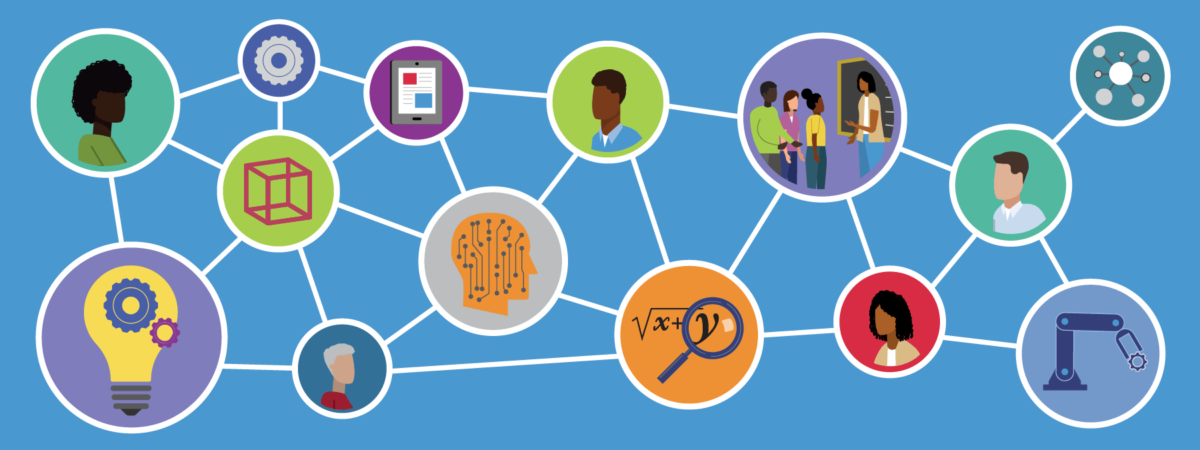
February 24, 2021 | By Judi Fusco, Missy Bellin and Jeremy Roschelle
AI systems can be defined as software or machines that are able to perform tasks we typically associate with humans. These systems are helpful because of the algorithms they use to make decisions. In other words, algorithms are the “brains” of an AI system, and there can be risks and rewards associated with using algorithms to make decisions. Using algorithms, AI systems can examine data, draw conclusions, and then perform some sort of action. In addition to many other tasks, AI systems can also:
With different combinations of capabilities and algorithms, AI systems can do some things very well, very quickly, and at a massive scale. At times their performance can resemble humans. Some people are excited by the possibilities, some are scared, and others aren’t even sure what’s possible and what’s science fiction—there is a lot of hype out there!
While many people fear that AI systems will replace humans in the workplace, we take a human-centered perspective that sees AI systems working with humans and helping to augment human skills. People should always play a leading role in education, and AI systems should not replace teachers, ever. There are certain interactions that require human touch and understanding, such as giving certain types of feedback or building trusting relationships with students. At the same time, AI systems could automate some routine, repetitive tasks to provide time for teachers to focus on more complex activities.
There are additional ways to define AI and think about its possibilities in education, including its use to support collaboration and help teachers understand more about what their students know and don’t yet know. In the upcoming webinar series, “Educators, Artificial Intelligence, and the Future of Learning,” we will focus on three areas of learning that AI products currently support or are poised to impact in the next five to 10 years: assessment, learning environments, and teacher support.
Researchers and technologists are currently using AI to transform learning by:
In addition to sharing the latest research on AI and education, the webinars will dive into questions that educators have about using AI in their classrooms, such as: How can teachers understand the decisions that AI systems make? Can they override them? How can educators be sure their students’ data is safe, and that AI systems don’t act with bias?
Our goal is to start a conversation between educators, researchers, and entrepreneurs to illuminate the future of education with AI.
Watch the webinar recordings:
To learn more about AI and the future of STEM learning, check out this list of resources. We encourage you to also read the CIRCLS “AI and the Future of Learning” report to learn about new visions for AI systems.
This work was supported by the National Science Foundation under grant numbers #2040753 and #2021159. Any opinions, findings, and conclusions, or recommendations expressed in this material are those of the authors and do not necessarily reflect the views of the NSF.
By Lauren McMahon and Heather Dowd